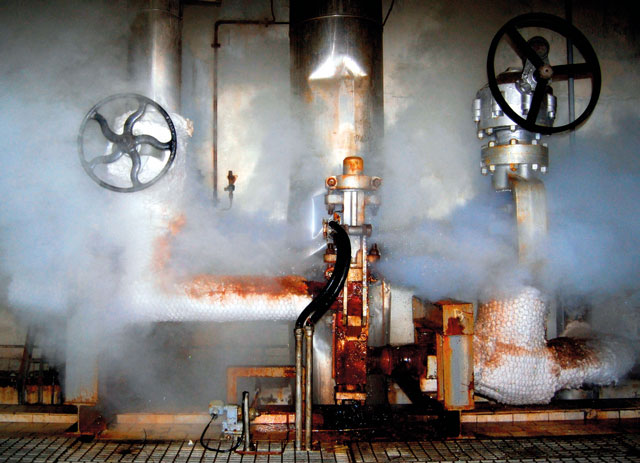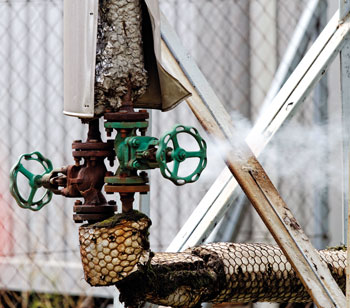
Having efficient boilers can be undermined by leaks further along the system. TLV Euro Engineering’s general manager Michael Povey looks at the three main locations of steam leaks and how they can be prevented.
Win facilities designed and constructed to consume as little energy as possible, it’s rare to find steam leaks. And no matter how efficient modern steam raising equipment such as steam boilers and steam generators are, their efficiency can be easily lost through steam leaking from pipe fittings, valves, traps, etc.
However, unless these facilities are regularly inspected and maintained, steam will eventually leak as systems age. And without proper maintenance, the number of leaks and the volume of leaked steam will only ever increase.
Leaks from valves and steam traps can be further divided into external leaks, like those from gland packing and internal leaks, where steam escapes through the seat and into the outlet.
Preventing Leaks from Pipe Fittings
The main causes of steam leaks from pipe/valve flanged and screwed connectors are stress from pipes expanding or contracting from the heat of the steam; threaded components that have loosened due to stress; and/or deterioration of gaskets.
When pipes contract due to a drop in steam temperature, the nuts/bolts of the fitting can loosen, causing a gap to open between the two pipes from which steam will escape. If facilities managers find a steam leak, they should do more than simply tighten nuts and bolts or replace the gaskets, they should also investigate the cause of the leak and consider changing the number and location of fixed pipe supports or adding expansion joints. If countermeasures like these are not taken, the leak will likely only re-emerge in the future.
Preventing Leaks from Valves
The majority of external leaks from valves come from gland packing which, thanks to the construction of valves, can be stopped temporarily by tightening the valve. However, in locations where the valve is opened and closed regularly leaks are likely to occur again, so it is recommended that bellows seal valves be used, which are resistant to gland leakage thanks to the bellows that close off the internal and external gland packing.
Internal leakages occur when steam escapes – often through the valve seat – and flows through the outlet while the valve is in the “closed” position. Internal leaks cannot be seen from the outside and are therefore difficult to spot, so using a stethoscope or device that measures ultrasonic vibrations is helpful.

It is common for steam to leak from the seat of valves with both adjustable and closable valve openings. One way of preventing this is to use adjustable and closable valves, which eliminates the need for dual-function valves. However, another effective method is to install a separator to remove the condensate within steam because supplying dry steam will prevent the valve seat from deteriorating.
Preventing Leaks from Steam Traps
For valves and pipe fittings, leaks occur when the device stops functioning correctly, but for steam traps, the loss of steam that occurs during normal operation must also be considered.
Steam Losses During Normal Operation
The amount of steam leaking from a steam trap during normal operation varies depending on the type of trap. Depending on steam pressure and condensate volume, when new, a disc trap can leak up to 10x the volume of steam compared to an energy-efficient Free Float trap from TLV Euro Engineering.
Leaks from Failed Traps
Steam that leaks from even one failed trap can represent a significant financial loss and data from our own global steam trap assessments show that, prior to assessment, an average of 5-10% of all steam traps in facilities leaked steam.
By identifying leaking traps and swapping them with energyefficient Free Float traps, facilities can achieve significant energy savings.
www.tlv.co.uk | sales@tlv.co.uk | t: +44 (0)1242 227223

